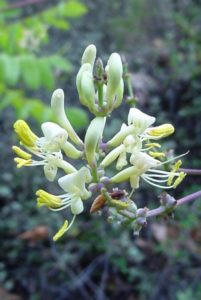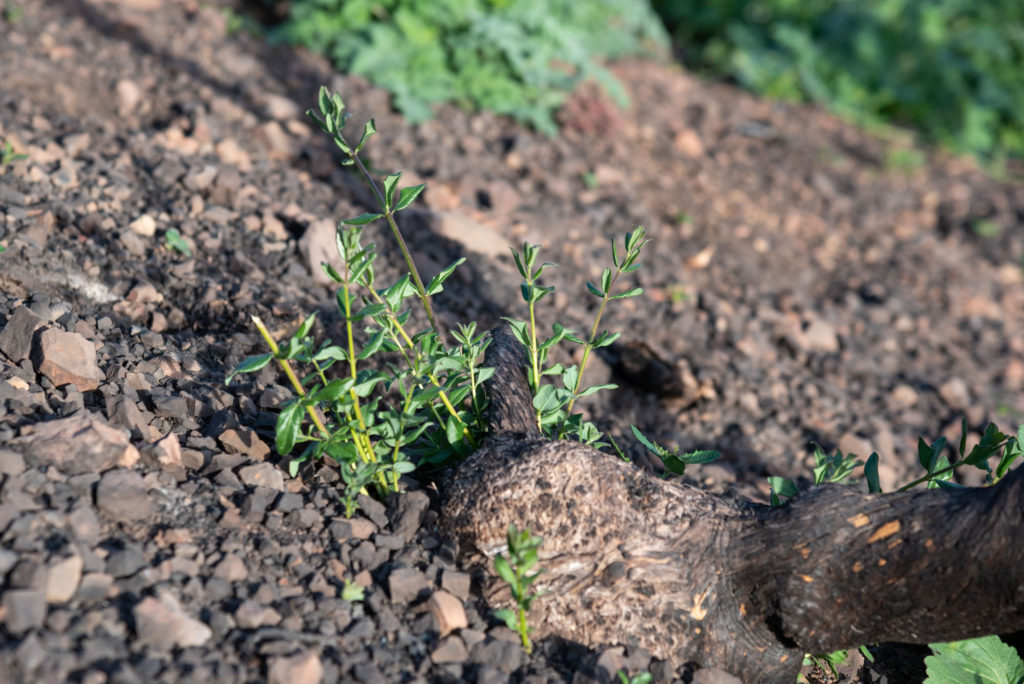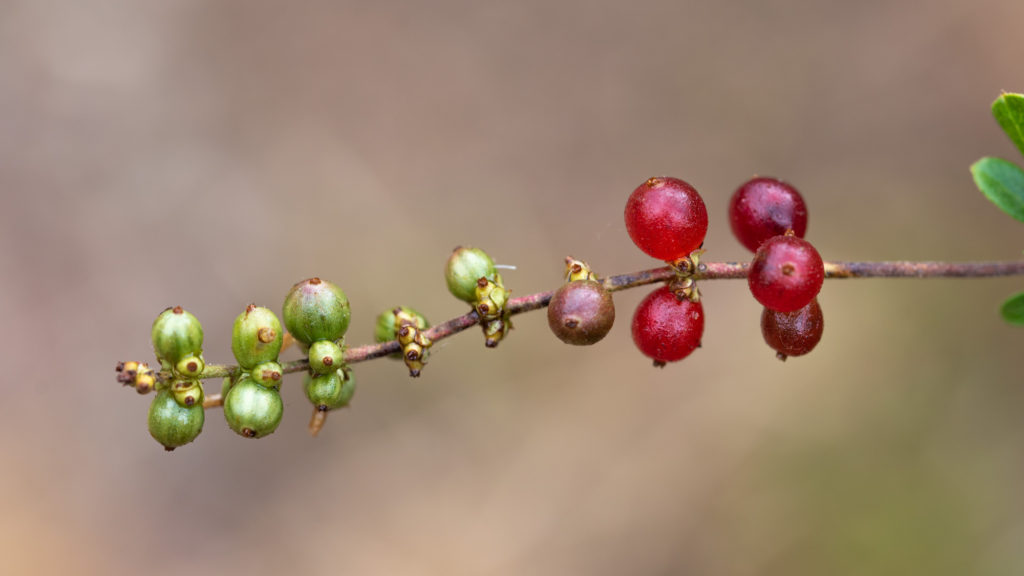
Lonicera subspicata var. subspicata
- Sensitive – U.S. Forest Service
- Rare Plant Rank 1B.2 – California Native Plant Society
- T2 Imperiled – NatureServe (2016)
Found primarily in the Santa Ynez Mountains and in a few locations on the Channel Islands, the perennial Santa Barbara honeysuckle is a rare variety of its more common and widespread variety, Lonicera subspicata var. denudata (southern honeysuckle). It can be found in scattered populations on shaded slopes in chaparral, woodland, riparian, and coastal scrub areas within this range.
Description
This fast-growing shrub acts like a vine (known as a “vining shrub”), growing upwards along trees and other plants, or sprawled outwards along the ground. It can grow between two to five feet tall and blooms between April and August. Its small pale yellow flowers grow as clusters at the end of the stems, which are lined with oppositely arranged leaves.
The leaves are more than twice as long as they are wide, which is what separates the variety from the more common southern honeysuckle, which has elliptic to round leaves that are often as wide as they are long. The fragrant flowers have long stamens that grow outward to attract pollinators. Each of these flowers eventually produces a red berry that provides food for wildlife in the fall.
Interestingly, the Santa Barbara honeysuckle and the more common southern honeysuckle can both resprout after being burned. Even after their entire canopy is burned away in a wildfire, they will generally vigorously send up new stems from their base.

The Chumash have long used both varieties of this species medicinally. The leaves can be boiled into tea that can soothe cold symptoms as well as treat wounds and sores.
Threats and Conservation Efforts

Land development on private properties in the Santa Ynez Mountains and vegetation clearing projects are threats to the Santa Barbara honeysuckle. One project in particular, proposed by the Forest Service in 2016, would have cleared massive amounts of vegetation on the ridge of the Gaviota Coast. ForestWatch and partners at the California Chaparral Institute took the agency to court, and the project was eventually dropped.
ForestWatch continues to monitor project proposals and other activities in and around the Los Padres National Forest where the Santa Barbara honeysuckle grows to ensure that protective measures are implemented where needed.







